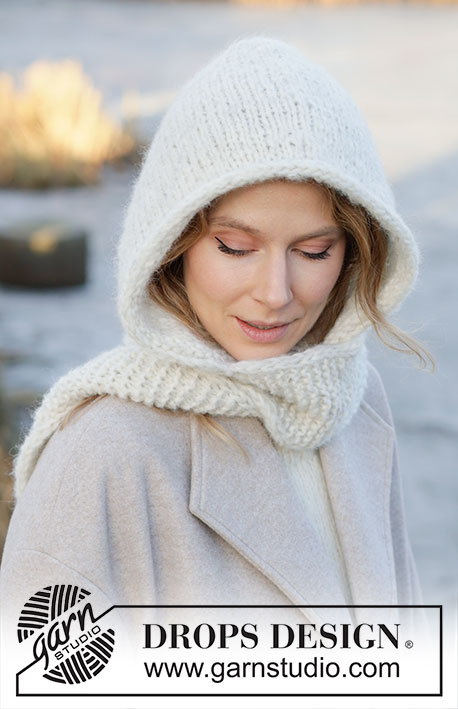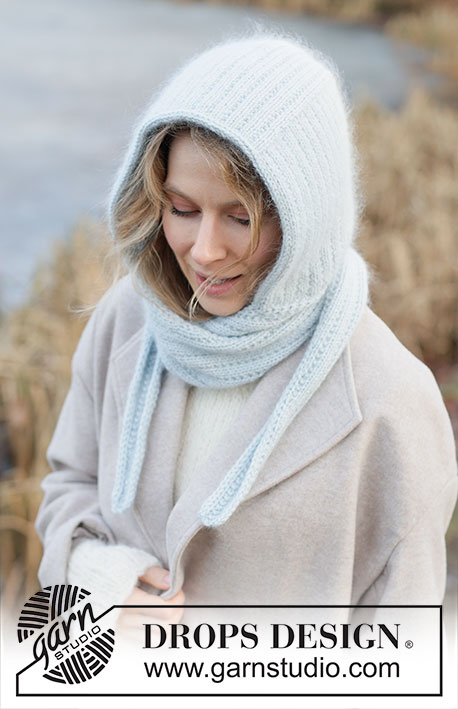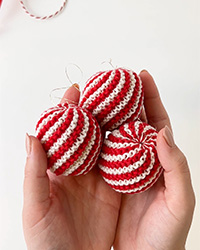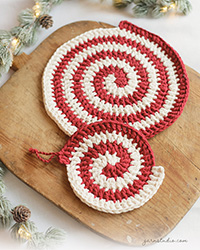Knit (K) - US/UK method
Patterns using this technique
Video #125, listed in: Learn to knit, UK/US style
Our videos do not have sound. We are a worldwide company and our videos are watched by people speaking endless of different languages and many do not understand English. So since there is not a given language for us to use, we instead have written instructions to accompany the video, and then there is no sound to disturb while watching.
You can adjust the speed of this video by clicking on the icon, on the play bar.
![]() Evelyne wrote:
Evelyne wrote:
Bonjour, Cette méthode que vous qualifiez d'anglaise et américaine est aussi utilisée, avec une petite variante, en Belgique. Afin d'avoir plus de liberté dans les doigts nous utilisons des aiguilles longues (40 cm) et qui sont calées sous les bras. De cette manière les aiguilles tiennent quasi seules et les mains sont plus libres pour enrouler le fil. C'est ainsi que j'ai appris à tricoter à l'école à Bruxelles et que j'ai toujours vu faire ma mère, ma grand-mère et mes copines.
18.01.2016 - 20:27Ruth Perdomo wrote:
Como tejer estilo americano reves
12.11.2014 - 23:09
![]() Esther Meijburg wrote:
Esther Meijburg wrote:
Hoewel ik de video's fantastisch vind, mis ik hier, net als Olga Schuhmacher de techniek waarbij je de draad in de rechterhand hebt, over de rechterwijsvinger geslagen, zodat je de naald niet los hoeft te laten bij het omslaan. Wanneer je de draad daarbij ook nog om je pink hebt hou je een gelijkmatige spanning op de draad waardoor je werk mooi gelijkmatig wordt! Misschien een idee om ook een 'Recht- de meer verfijnde Engelse of Nederlandse techniek' video toe te voegen?
21.09.2014 - 13:11
![]() Heidi wrote:
Heidi wrote:
Ich stricke auch auf diese Weise. So habe ich es von meiner Mutter gelernt. Ich habe versucht, anders zu stricken, und bin kläglich gescheitert.
07.03.2014 - 18:29
![]() Olga Schuhmacher wrote:
Olga Schuhmacher wrote:
Ik brei ook Nederlands maar laat de naald niet bij elke steek los om de draad om te slaan. Je beweegt alleen de wijsvinger. Het gaat dan ook veel sneller. Ik brei net zo snel als m,n Deense of Duitse breivriendinnen!
06.11.2013 - 20:17
![]() Anna wrote:
Anna wrote:
Fast genau so habe ich von meiner Mutter stricken gelernt. Ich halte den Faden aber über dem rechten Zeigefinger und dieser bewegt sich zu der abzustrickenden Masche. Das geht viel schneller und das Strickbild ist schöner und etwas fester, als die herkömmliche Art, wie heute in Deutschland das Stricken gelehrt wird.
17.10.2013 - 08:22
![]() Meike Mertens wrote:
Meike Mertens wrote:
Super, ich habe seit zwei Wochen meine Strickladen in Bad Homburg und es kommen häufiger Kunden, die auf diese Weise stricken. Nun kann ich es auch und kann ihnen helfen. Vielen Dank!
21.09.2013 - 11:24
![]() Angelika wrote:
Angelika wrote:
Warum einfach, wenn es auch umständlich geht. Mit der "englischen Methode" dauert das Stricken viel länger!
07.07.2013 - 16:31
![]() Mercedes wrote:
Mercedes wrote:
Esta es como me enseño mi madre. Se puede ir bastante mas rápido que en el video como dice Liz.
15.01.2013 - 22:10Leave a comment or question to this video
Your email address will not be published. Required fields are marked *.
























Je suis contente de voir que je tricote avec la méthode américaine, d 'ailleurs j 'avais très peur en voyant la personne tricoter avec le fil à la main gauche!!!!!
23.01.2016 - 10:46